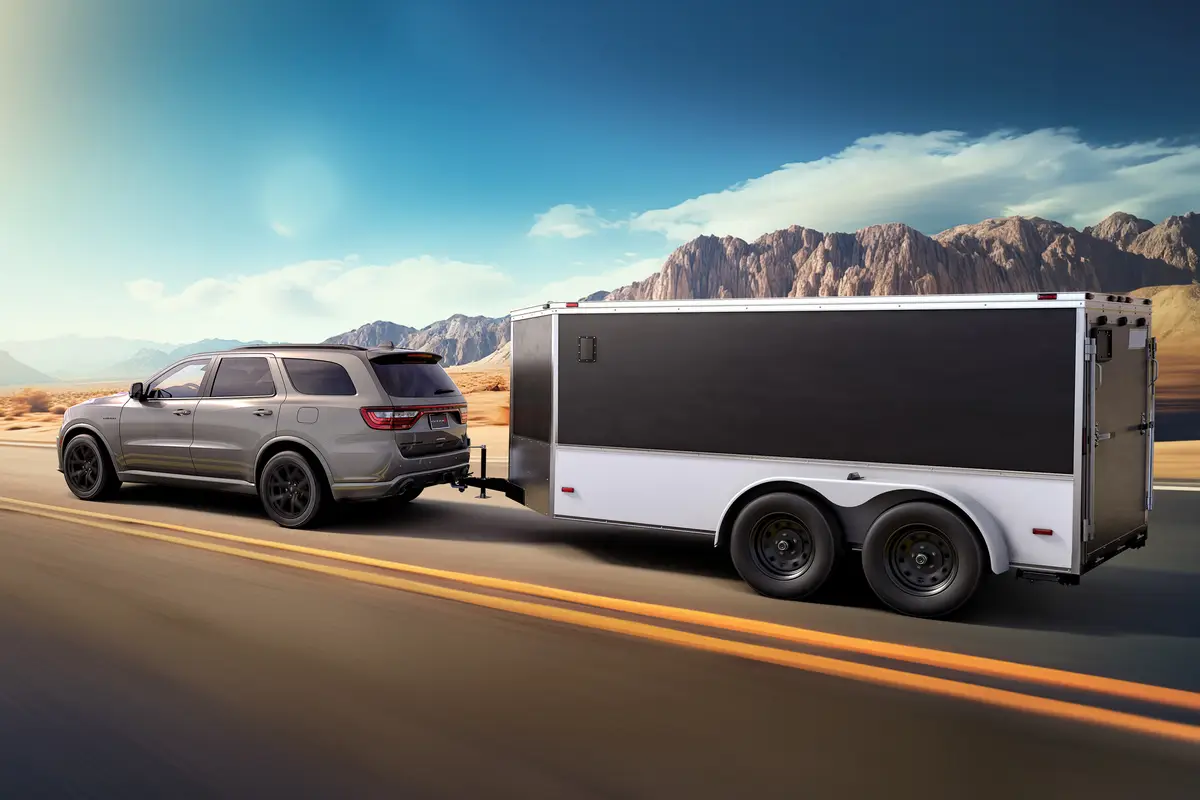Our view: 2009 Nissan GT-R



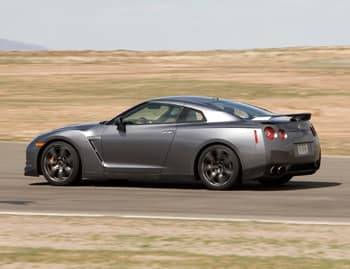


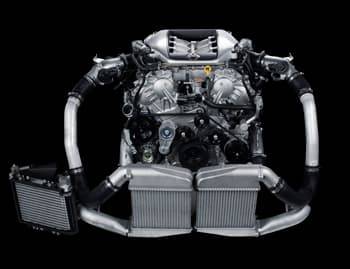

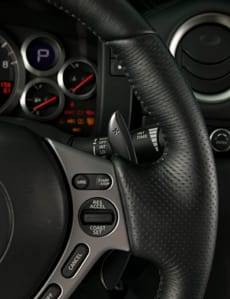
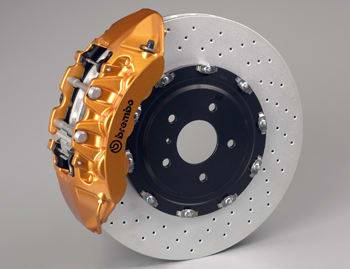
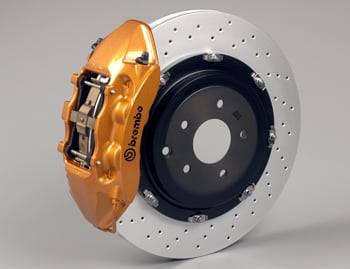
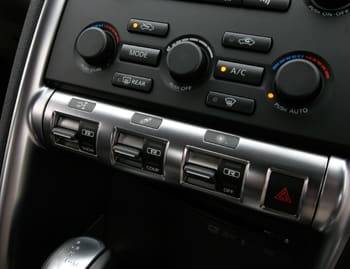
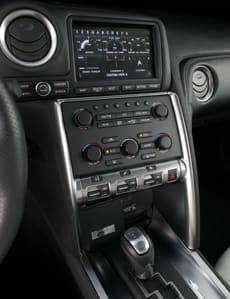
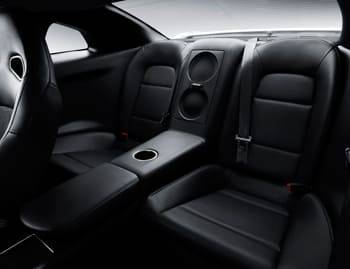
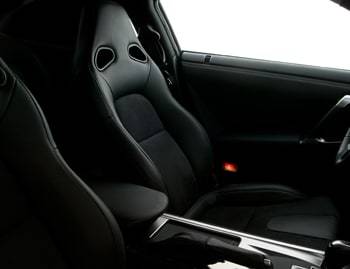
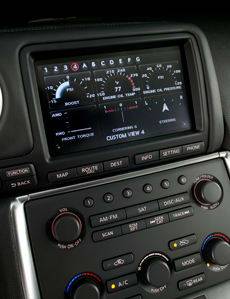

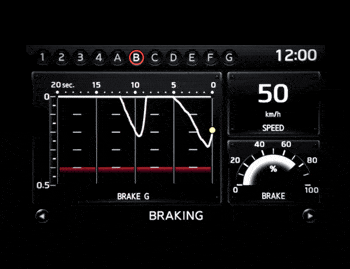

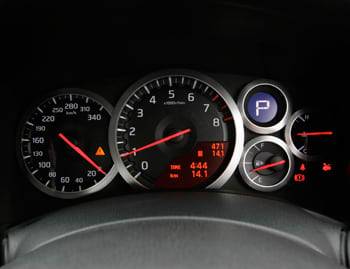
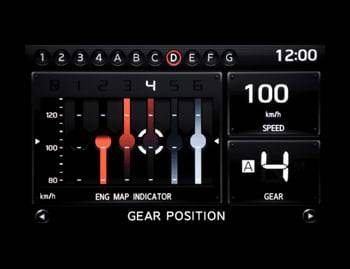
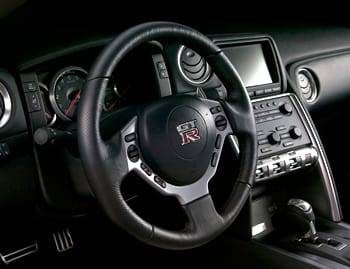
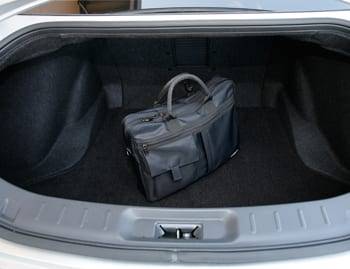
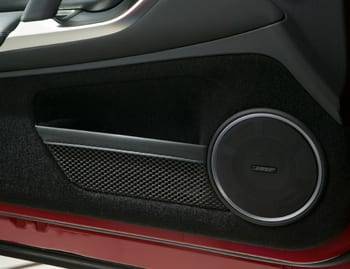
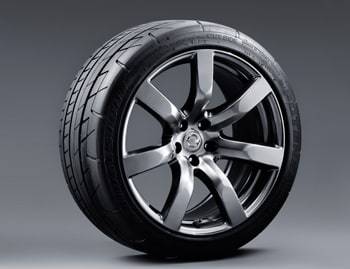
























The Nissan GT-R didn’t knock me out. There, I said it. Send the Gearhead Police; I’ll go quietly.
Possibly the most anxiously anticipated import in history, the GT-R has been sold overseas for decades under the name Skyline, and though it won’t hit American dealerships until July, it has appeared for review by people of my ilk. Almost without exception, this car is meeting or exceeding expectations. To be clear, I found the GT-R outrageously competent on the racetrack and comfortable beyond expectation on the road. It’s the day-to-day stuff — driving around town and country — that put me in something of a torpor.
Of course, I also track-tested the GT-R — on Reno-Fernley Raceway — because not doing so would be like using a fighter jet to dust crops. I’ll detail that later on, but Cars.com is a resource for consumers, and we emphasize the utility and experience of cars the way most people use them most of the time. That’s where the GT-R surprises — but might not delight.
GT-R in the Real World
Unless you’re trailering the GT-R to and from a racetrack, you’ll be spending more time driving it in the real world. Nissan deserves praise for making this a track star whose everyday usability is even relevant. The GT-R is eminently streetable. Dunlop all-season tires on silver-painted wheels are a no-cost option. Though winter tires aren’t a factory option, Nissan says Bridgestone Blizzaks also will be available. With prices well north of $200 a pop, you’d have to be pretty serious to get separate summer and winter sets.
Standard all-wheel drive helps tame the twin-turbo V-6’s 430 pounds-feet of torque. A selectable Snow mode on the transmission that splits the power 50/50 to the front and rear axles and lowers the shift rpm also should be of assistance in foul weather, but I caution against relying on a GT-R in more than light snow accumulation. It rides low to the ground, and the tires and driveline won’t help you if you’re pushing around mounds of snow. But again, the notion that you could use a car of this one’s capabilities all year is remarkable.
A Shockingly Shock-Free Ride
Another plus: This car rides impossibly smoothly. The roads I was on were excellent, but even so there are performance cars out there that find every road imperfection and describe it in detail directly to your spine. I was marveling at how comfortable I was when I realized the adaptive suspension was on the Normal setting. Normal attempts — as all good computer-controlled dampers do — to maximize ride quality but adjust when conditions call for it. The Comfort setting sacrifices some agility and body motion for smoothness. Nissan has gone out of its way to emphasize that the production GT-Rs in the U.S. will have softer Comfort-mode calibration, and I can’t imagine what they’re concerned about. On the opposite end of the spectrum is the R mode, which firms things up and virtually eradicates body roll for track driving. The GT-R shows how far technology has come. In the automotive market as a whole, adaptive-damping settings have gone from a choice of either firm but not necessarily optimal or compliant — and hardly luxurious — to systems like the GT-R’s that hit the mark on both extremes as well as you could hope for.
The Problem
And that brings me to my problem with the GT-R: It’s a champ at one extreme — the track — and more comfortable than it has a right to be at the other extreme. But it’s not engaging to drive in day-to-day circumstances. It’s a heavy car, and you notice that more in daily driving than you do on the track. You feel the weight and the fat tires. It reminded me of the Mitsubishi 3000GT VR4, which in the mid-90s was my favorite car … until I actually drove it. It, too, was a twin-turbo AWD sports car that turned out to be too large and heavy and was plagued by true turbo lag.
Now, you may hear raves about the GT-R’s lack of turbo lag, and I found that to be true on the track with the turbos perpetually on the boil, but on the street I absolutely experienced some accelerator lag — maybe turbo, maybe throttle, maybe transmission — but definitely lag.
This raises the question: What makes a car fun or generally enjoyable? I suggest it’s the driving, the look and the sound. In terms of driving, fun is definitely a matter of taste, but I drive a lot of different cars, and I’m not feeling the fun here that I do in others when I’m not on the track. For one thing, a manual transmission isn’t offered. To me and many driving enthusiasts, driving stick is part of the fun. Paddle shifters don’t count. If you’re not on the track, they’re little more than an affectation for Formula 1 wannabes and people who can’t drive a real manual. All-wheel drive keeps you on course — safe but not necessarily fun in normal driving, and I say the same thing about other cars, including the 911.
As for the sound, I like the exhaust note under heavy acceleration, but this is no horizontally opposed engine or rumbly V-8 or V-12. Out on the town, it’s pretty tame. Then there’s the sight. Again, tastes vary here, but I’ve met few people who cite the car’s look as a big positive. It’s not a bad-looking car, but it’s a type. It’s like your 350Z left middle school for the summer and reappeared after it hit puberty and then the gym. To the average American, this just doesn’t compare to the best of the Germans and Italians, and even, I daresay, the domestics.
On the Track
The GT-R’s track performance would be impressive by any standard, but to understand the car’s triumph, you must bear in mind its price: The base GT-R’s suggested retail is $69,850. The GT-R Premium is $71,900. Its limited sales volume (1,500 annually in the U.S.) practically ensures dealers will mark it up, but the same can be said of other production cars that stand a chance of matching the GT-R’s performance, and there are few. For straight-line acceleration, “cheap” competitors like the Chevrolet Corvette Z06 ($71,275) and Dodge Viper ($84,880) are in the same ballpark. If you’re looking for handling prowess and track times, though, the GT-R’s standard all-wheel drive gives it an edge. The GT-R’s closest competitors are the more-ambitious versions of the Porsche 911, including the all-wheel-drive 911 Turbo. Starting price: $126,200. There are other production cars that rival or beat the GT-R in one regard or another, but most are exotic supercars with exotically high price tags. We’re talking hundreds of thousands of smackers.
Sick Quick
Fitted with a heavy racing helmet, I was prepared for a neck snap when I stood on the GT-R’s accelerator. What I got was a gentle nudge followed by a rush of pressure that increased all the way up to the twin-turbocharged 3.8-liter V-6’s 7,000-rpm redline. Then the six-speed automated manual fired off a shift as close to instantaneously as you can imagine, and the whole thing started again. The GT-R is quick. Sick quick. It’s almost motorcycle quick, with a Nissan-cited 0-60 mph time of 3.5 seconds — but it was clearly quicker than that at Reno-Fernley. The hottest takeoff comes courtesy of a launch control feature that — once activated — lets you stand on the brake and accelerator, running the engine up to 4,500 rpm. When you release the brake, it dumps the clutch and you get the neck snap I’d expected earlier, but nary a chirp from the rear tires. The standard all-wheel drive and fat Bridgestone Potenza summer-performance run-flats rated P255/40ZR20 in front and P285/35ZR20 in the rear put all the power to the pavement. No smoky burnouts here.
Dual-Clutch Six-Speed
The automated manual is a dual-clutch design, with a separate clutch for odd and even gears. It’s not the first we’ve seen, and how quickly it shifts versus the others is mostly academic; they’re all remarkably fast. The greater difference is in the programming, and I can’t say I was too fond of this one’s automatic operation on the track. Even with the gearbox’s “setup switch” set to R (Racing), I achieved better results with sequential-manual operation using the steering-column paddles. (And really, this is the only environment in which I think paddles make any sense.) Ordinarily I wouldn’t bother to point this out, but after seeing what the Mitsubishi Lancer Evolution’s dual-clutch could do in automatic mode — on a racetrack — suddenly it’s relevant. (It was a near-consensus among the journalists present that the Evo was faster when left to its own devices than any of the drivers could make it by shifting manually. Brilliant.)
As for manual downshifts, the GT-R’s were reasonably quick when on the gas, but they seemed a bit slow on lift-throttle. Perhaps the downshift is a tortoise only compared to the upshift’s hare. While the transmission’s automatic mode hadn’t done me any favors, the electronically controlled all-wheel drive was a hero, apportioning torque forward and back, as needed. For a car with a 53/47 percent front/rear weight distribution and 100 percent of the grunt going to the rear wheels as a default, the nose pushed wider than I expected when cornering. It took time and a leap of faith before I learned to throw caution to the wind and just gun it after turning in. This brought the tail around, and the system was always ready to shift up to 50 percent of the torque to the front wheels, keeping everything under control. I honed the technique by plowing deep into the hairpin and then bullwhipping around, in my best approximation of an Emergency Bat Turn. I was well aware that I’m not this good, but it seemed to me that to screw up this maneuver in a GT-R, you’d kinda have to suck.
The car’s aerodynamics are so prodigiously tuned for front and rear downforce that the lateral grip seemed endless. Carrying more speed into a turn seemed to mash the tires into the pavement just hard enough to match the increased inertia. I should note that the wheels have a knurled bead to keep them from spinning in the tires. The engineers added this provision, which your Camry doesn’t have, after noticing problems during testing.
Skill Required
As I’d pondered with the Evolution, I started to wonder if this car was a little too easy. Though I respect the engineering, do we really want a car that drives itself? The standard electronic stability system also has a selectable R mode — similar to the Corvette’s Active Handling Competition Mode — that allows more sliding and wheelspin. I felt like it might be hiding the car’s innate character, and I made the genius move of turning it off altogether. In short order I crested a rise too hot into the chicane and dipped both right-side wheels off the track — an excellent way to not be invited back. Perhaps skill still has a place, even in this car.
The package wouldn’t be complete without stunning braking performance from Brembo-brand floating cross-drilled rotors and six-piston monoblock calipers the size of cats. (The rear binders have four pistons and are merely the size of rats.) Ever ready, the brakes never faded on me, and though there were three GT-Rs circling the track for hours without pause or mandatory cooling laps, I never once caught a whiff of brakes in the pits. Smells like victory.
Multifunction Graphical Display
A must-see feature is the multifunction display integrated into the standard navigation screen. A total of 11 screens give more information than I’ve ever seen in a production car, starting with the mundane oil temperature and pressure, turbo boost gauge and fuel economy, and ranging up to steering angle, acceleration and braking in percent, AWD torque distribution, and lateral, acceleration and braking g-force. What I particularly like is that the data can be displayed a number of ways, including a running graph or a simple gauge. Four of the screens can be configured by the driver to show what he or she wants. Even when six dials appear, it doesn’t look busy. Credit here goes to Sony. Already intimately familiar with the car and its characteristics, the people responsible for PlayStation’s Gran Turismo game designed the interface. Check out the photos.
The Inside
The cabin is a mix of good and bad, but it’s mostly good. The seats held me in place on the track but weren’t too restrictive in normal driving. The controls are well laid out and ergonomic, and that’s still not the norm. The materials are mostly decent quality, but no one’s very keen about the carpet on the inner door panels. Maybe because it’s really carpet — the same stuff that’s on the floor.
The backseat isn’t for grownups, but it’s a backseat, and that’s not something you’ll find in your average supercar. Point: Nissan. The GT-R Premium comes with side-impact airbags for the front seats and curtain types that protect front and rear occupants in a side collision. These bags are neither included nor optional on the base GT-R. Point revoked.
It’s About the Numbers
If you’re not an owner who would make frequent trips to the racetrack, you’ll find the car’s appeal is more like being Tank in “The Matrix,” watching a cascade of digits on the screen, than it is like being in the actual Matrix, watching Trinity spiraling around in skin-tight leather. (Someday I’ll write a review without a geeky science-fiction movie reference.)
In a previous life, I evaluated home and car audio equipment, with an emphasis on the components that make the most difference: loudspeakers. The protocol was to set up a pair of speakers and give a minimum of a week’s critical listening. Only if the pair passed the listening test did it go on to the kind of thorough measurements that provided objective data: frequency response, impedance, distortion, directivity and so on.
The point is that measurements alone never tell the whole story of the equipment, and there was no reason to put the effort and money into bench testing if the things just didn’t sound good. Ironically, what made the sound compelling was often what could be considered flaws. “Warmth” is actually distortion. Detail may come from uneven frequency response. All the same, speakers that seemed flawed in objective measurements often appealed to the ear — or at least someone’s ear.
Likewise, a car that gets squirrely in turns may do so because of what’s technically a shortcoming. But isn’t it more fun to hang the tail out and learn to control the drift? For all its history and stunning performance for the price, the GT-R was a little uninspiring. If you’re looking for a comfortable ride to the racetrack where you proceed to kick all the other cars’ asses, the GT-R is right for you. If you want to have fun driving in normal circumstances, I don’t think it is. All you longtime Skyline refuseniks can relax; no need to ache every time you see a GT-R. For similar results, get yourself a Mitsubishi Lancer Evolution; it has a trunk, a real backseat and a manual transmission, if you prefer one to the dual-clutch automatic. In fact, for the price, you can get two.
| Send Joe an email |

Former Executive Editor Joe Wiesenfelder, a Cars.com launch veteran, led the car evaluation effort. He owns a 1984 Mercedes 300D and a 2002 Mazda Miata SE.
Latest news


